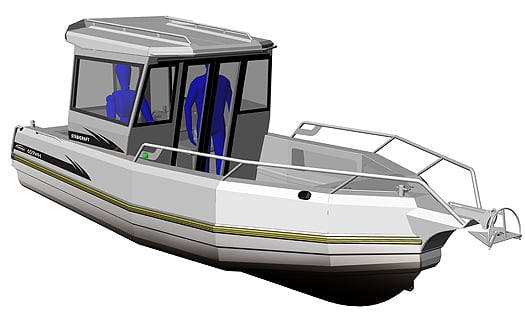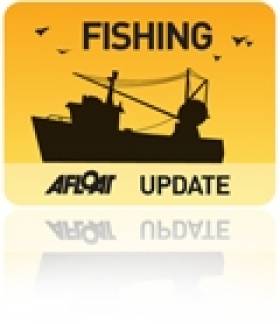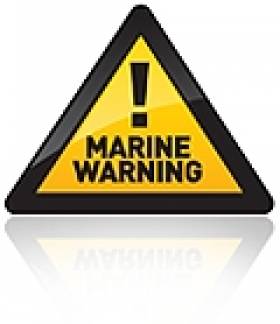Displaying items by tag: monitoring
NZ Firm Delivers Fishery Monitoring Vessels to Alaska
#FISHING – New Zealand's Stabicraft Marine has delivered nine custom 659 Wheel House vessels to Alaska where they will be used as observation boats to monitor the gill net fishery and the fishery's interaction with sea mammals and sea birds. They look like practical boats similar in concept to Rigid inlfatables (RIBS) used in this country such as Ireland's own pioneering Red Bay Boats Cabin RIbs and also the Garda Siochana Water Unit's Delta Cabin RIBs currently deployed in Glandore Bay.
The vessel orders came at a special request from Saltwater Inc, a private organization that gathers data on wild life and fish stocks for the Alaskan Department of Fish and Game and by the National Marine Fisheries Service.
The order is a coup for New Zealand based Stabicraft Marine, as the vessels had to meet stringent US criteria. Stabicraft as a manufacturer came under intense scrutiny for being a non US company as well as having to have an independent Marine Surveyor assess Stabicraft's design - ultimately endorsing their design and build.

The Stabicraft 659 Wheel House destined for fishery monitoring duties in Alaska
"Saltwater, Inc. located in Anchorage, Alaska, has ordered the vessels as part of a US federal government contract with national marine fisheries. It will last for the next two summers and will be located in the Petersburg-Wrangell area of southeast Alaska," says Stabicraft Marine Managing Director, Paul Adams.
Each boat will have an operator and observer onboard, some days the vessels and their operators will need to travel a total of 80 miles in all conditions and will be observing fishing vessels in the gill net fishery.
The vessels will be used in a variety of roles, mainly based around rivers and estuaries and offshore work.
"This is a significant order for Stabicraft. It has traditionally been very difficult for non-US boat manufacturers to supply vessels to be used in government projects. Its a real coup."
"We are led to believe that this is a high profile operation and everyone in the area will be watching these boats. Even though, they will be used in the inside waters of southeast Alaska, there are many days that the wind whips the seas up and the performance of these will be tested."
Each of the nine 659 Wheel House vessels had to meet stringent design and performance requirements such as visibility, stability and strength to cope with the often treacherous water conditions of Alaska.
Like all Stabicrafts, safety is a key feature. The 659 Wheel House features continuous tubes of individually sealed flotation chambers providing a 'Life Ring' of 2276 liters (601 gallons) of buoyancy on the upper-outer extremities of the boat. With the addition of an airtight chamber between the floor and the hull, these boats are virtually unsinkable. At rest, the GII Pontoon design sits in the water, giving increased stability for when the observers are moving around the forward cockpit.
Visibility is served by 6mm toughened glass all round the aft wheelhouse, with access to the cabin itself via full-length glass sliding twin doors front and rear of the cabin. To provide extra room for passenger comfort in the cabin, the cabin itself is wider at shoulder height than the gunnels.
Extra emphasis has been placed on the gunnel height of the vessels and was designed at 873mm (34in). The Stabicraft design team incorporated high gunnels to not only keep passengers safe when out on deck, but also would see the vessel being less likely to take on water and be safer.
"Stabicrafts are already inherently very strong and the pontoon design adds a lot of rigidity. On these particular 659 Wheel House vessels, this has been enhanced by the use of 6mm plate alloy for the hull, 4mm for the pontoons and 4mm for the cabin."
"The positive buoyancy tubes offer 'life-ring' security, the Saltwater Inc observers are going to be very, very safe when out on the job.'
The 9 Stabicraft vessels will begin on water operations in the coming weeks.
Stabicraft 659 Wheel House Specifications:
Length Overall: 6893mm (22.6ft)
External Beam: 2361mm (7.7ft)
Internal Beam: 1700mm (5.5ft)
Gunnel Height: 873mm (2.8ft)
Cabin Height: 1988mm (6.5ft)
Cabin Width: 1842mm (6.0ft)
Fuel Capacity: 284litres (75 Gallons)
Vessel Weight: Approx 1100kg (2,425lbs)
Max Persons: 7
Max Persons Weight: 495kg (1092lbs)
Max Load (Persons, Motors, Gear): 958kg (2113lbs)
Motor Max Hp: 2x 150hp outboards
Marine Notice: Hydrographic Survey off Dundalk
The latest Marine Notice from the DTTAS advises all seafarers near Dundalk Bay and Carlingford Lough to give a wide berth to the hydrographic and oceanographic survey operation in the area this month.
The RV Celtic Voyager (callsign EIQN) will be carrying out survey operations between Kildeel and Clogherhead till 15 September.
The vessel will display lights and markers and will be towing different sensors from time to time with a single cable of up to 100m long.
Deployment of water level recording equipment will be necessary on the seabed at certain locations. These will be marked with appropriate buoys and lights as well as Irish Coast Guard radio notices.
Details of the survey area are included in a PDF of Marine Notice No 44 of 2011, which is available to read or download HERE.

























































